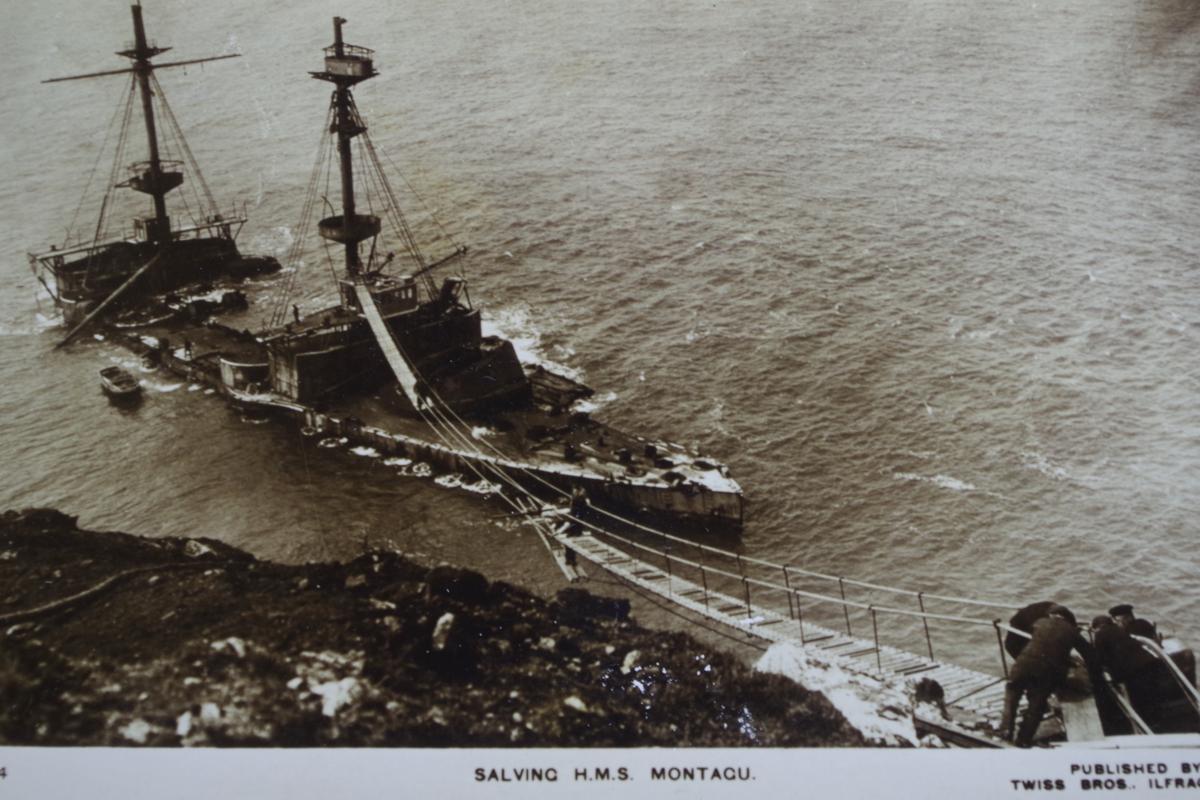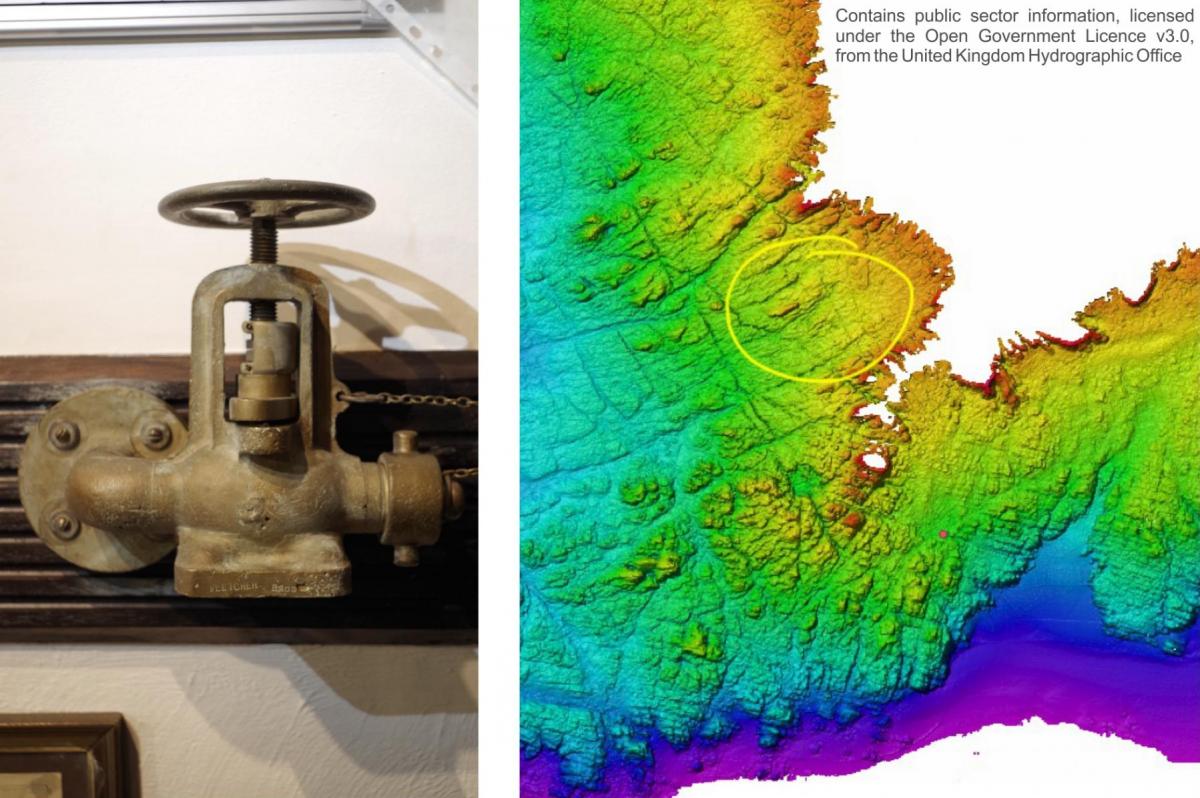Wessex Archaeology has been asked by Historic England to investigate the wreck of HMS Montagu, lost at Shutter Point on Lundy Island in the Bristol Channel in May 1906. Our job is to provide the archaeological and historical data and expert advice that Historic England will use to advise DCMS whether to schedule the wreck site. This is a service that our Coastal & Marine archaeologists have been providing to national curators for more than 15 years.
HMS Montagu was a pre-dreadnought battleship, a rare example of the wreck of a type of ship that was rendered obsolete when the revolutionary battleship HMS Dreadnought was launched. It ran onto the rocks of Lundy because of a navigational error and, despite the best efforts of the Navy, it could not be saved and had to be broken up and salvaged where it lay.
We have been collecting data about the site for a number of months. For example, our marine archaeologist Alistair Byford-Bates has researched plans and builder’s specifications at the National Maritime Museum. I have myself researched photographic and documentary evidence at the very generous Ilfracombe Museum and I’ve had success in tracing artefacts from the wreck held by local divers. David Howell, our Marine Geophysics Manager, has obtained bathymetry data of the wreck site from the UKHO.


Salving HMS Montagu (courtesy of Ilfracombe Museum), a find from the Montagu at the ILFSAC clubhouse, and bathymetry of the seabed at Shutter Point
We are not carrying out this investigation alone. We have strong links with local diving clubs and I have given a presentation on the project to Ilfracombe and North Devon Sub Aqua Club, as a result of which members of the club and others will be joining us as volunteers during the diving phase of the project. This is due to start in the week beginning 16 April. We will also be working with Help for Heroes to carry out a second diving investigation, supported by ourselves and Historic England.
This page will be updated as a diary of the investigation, so expect much more about the ship, its loss and our investigation as it progresses. We hope to post video of the work we’ll be carrying out underwater as it happens and interviews with those involved. We’ll also be inviting you to contribute if you have dived this fascinating wreck.